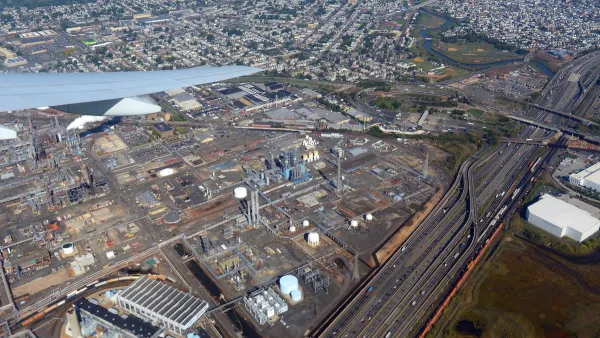"Canada is getting hotter faster than ever before and at a faster rate than almost any other country," reports Anna Mehler Paperny, and the country's infrastructure, public health, and economy are vulnerable to unforeseen impacts.
As Canadian communities begin to apply new temperature norms, a decennial task, they are faced with abnormal trends. "Average temperatures are rising across the board, during winter most of all. In the past 65 years, Canada’s national average winter temperature has risen 3.2 degrees," reports Anna Mehler Paperny. She adds, "Rain, snow, sleet and hail storms are becoming more erratic. What were once considered exceptional weather patterns – the kind researchers reject to avoid skewing their data – are becoming common."
"Canada’s infrastructure wasn’t built for this kind of climate," notes Paperny. "And much of the burden falls on municipal governments, with road, sewer and transit systems that can barely cope with existing weather conditions, let alone future vagaries." Adapting to these higher temperatures is becoming a challenge for local public health officials trying to assist vulnerable populations, and for cities and developers dealing with changes to building codes. Even insurance companies and apple farmers are feeling the effects of erratic weather.
“Traditionally, in the whole area of climate change, almost 99 per cent of the discussion has focused on mitigating,” said Blair Feltmate, who runs Canada’s Climate Change Adaptation Project. "But 'climate change is a done deal. There’s nothing we can do to turn it off. … How do we adapt to that new reality?'”
FULL STORY: Dramatic temperature increases could threaten Canadian health, infrastructure

National Parks Layoffs Will Cause Communities to Lose Billions
Thousands of essential park workers were laid off this week, just before the busy spring break season.

Retro-silient?: America’s First “Eco-burb,” The Woodlands Turns 50
A master-planned community north of Houston offers lessons on green infrastructure and resilient design, but falls short of its founder’s lofty affordability and walkability goals.

Delivering for America Plan Will Downgrade Mail Service in at Least 49.5 Percent of Zip Codes
Republican and Democrat lawmakers criticize the plan for its disproportionate negative impact on rural communities.

Test News Post 1
This is a summary

Test News Headline 46
Test for the image on the front page.

Balancing Bombs and Butterflies: How the National Guard Protects a Rare Species
The National Guard at Fort Indiantown Gap uses GIS technology and land management strategies to balance military training with conservation efforts, ensuring the survival of the rare eastern regal fritillary butterfly.
Urban Design for Planners 1: Software Tools
This six-course series explores essential urban design concepts using open source software and equips planners with the tools they need to participate fully in the urban design process.
Planning for Universal Design
Learn the tools for implementing Universal Design in planning regulations.
EMC Planning Group, Inc.
Planetizen
Planetizen
Mpact (formerly Rail~Volution)
Great Falls Development Authority, Inc.
HUDs Office of Policy Development and Research
NYU Wagner Graduate School of Public Service





























